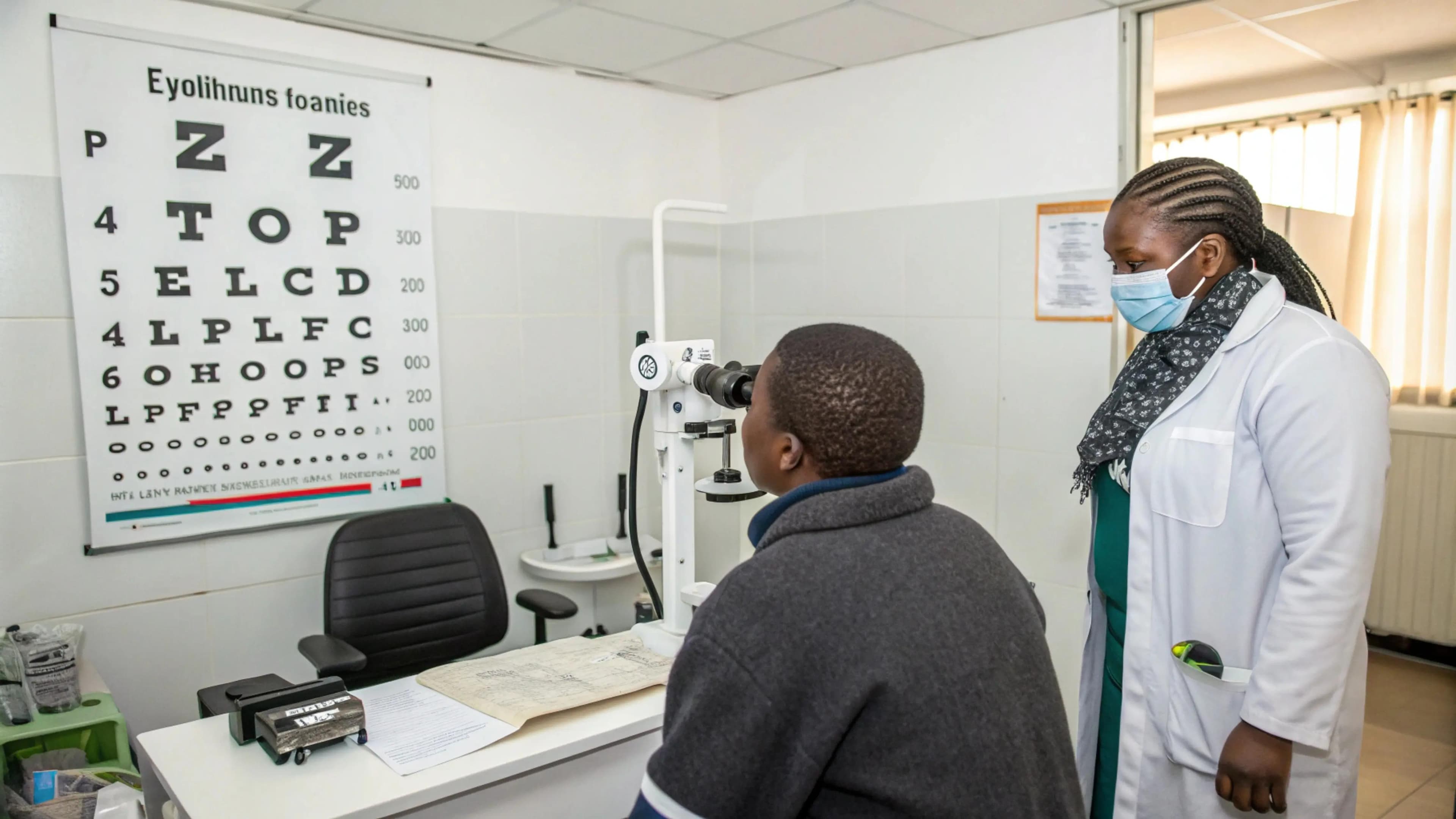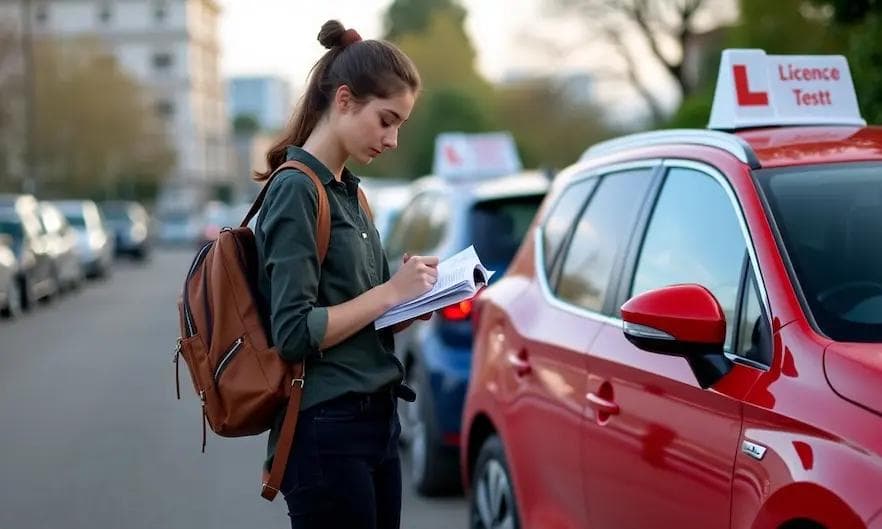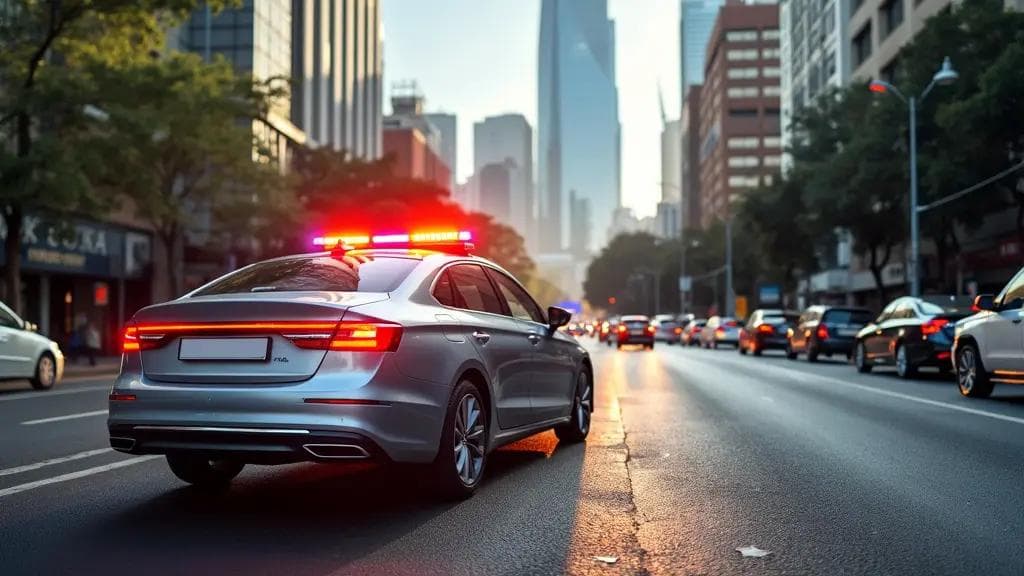K53 Eye Test: Vision Requirements for Learner’s and Driver’s Licences
The eye test is a crucial component of obtaining your K53 learner's license in South Africa. This comprehensive guide covers everything you need to know about the vision testing requirements, procedures, and how to prepare for success.
Quick Facts About K53 Eye Test
- Required For: All learner's license applications
- Test Location: Conducted at licensing centers or approved optometrists
- Validity: Results typically valid for 6 months
- Cost: Included in learner's license application fee
- Duration: Approximately 5-10 minutes
Eye Test Requirements for Learner’s and Driver’s Licences
Applicants must pass an eye test when applying for both learner’s and driver’s licenses. This test can be conducted at the Driving Licence Testing Centre (DLTC) or by a qualified optometrist. If opting for an external optometrist, the results must be submitted to the DLTC.
At the DLTC
Upon application, applicants undergo an eye examination assessing visual acuity and peripheral vision. The test typically involves reading letters or symbols from a chart at a specific distance.
External Optometrist
Applicants can choose to have the eye test performed by a qualified optometrist. The optometrist provides a certificate or completed form, which the applicant submits to the DLTC.
Minimum Vision Standards
- Visual Acuity: 6/12 (20/40) for each eye, with or without correction
- Combined Vision: Minimum of 6/12 (20/40) for both eyes together
- Field of Vision: At least 70 degrees temporal vision in each eye
- Color Vision: Ability to distinguish between red, green, and amber traffic signals
If vision in one eye is below standard, the other eye must meet specific enhanced requirements. Color blind applicants may need additional assessment. Night vision requirements may apply for professional driving permits
Practice Makes Perfect
Want to ensure you're fully prepared for your K53 learner's license test? Download our K53 Learners App for comprehensive test preparation, including:
- Complete road signs guide
- Rules of the road practice tests
- Vehicle controls tutorials
- Progress tracking
- Mock tests in exam format
What to Expect During the Eye Test
During your K53 learner's license eye screening, you'll undergo three essential vision tests to ensure you can safely operate a vehicle. Each test evaluates different aspects of your vision that are crucial for driving.
Visual Acuity Test (Distance Vision)
The visual acuity test is the most well-known component of the eye screening. You'll be asked to read letters or numbers from a standard Snellen eye chart positioned 6 meters away. The test begins with larger characters and progressively moves to smaller ones.
The examiner will test each eye individually by asking you to cover one eye at a time, followed by testing both eyes together. In South Africa, you need to achieve a minimum visual acuity of 6/12 (20/40) in each eye, with or without corrective lenses. This means you can see clearly at 6 meters what a person with normal vision can see at 12 meters.
Peripheral Vision Assessment
The peripheral vision test evaluates your field of vision - how much you can see to the sides while looking straight ahead. During this test, you'll focus on a central point while the examiner moves objects into your peripheral vision from different angles. You must demonstrate at least 70 degrees of temporal vision in each eye.
This test is crucial because good peripheral vision helps you notice pedestrians, cyclists, or vehicles approaching from the sides while driving.
Color Vision Evaluation
The final component is the color vision test, which assesses your ability to distinguish between different colors, particularly those used in traffic signals. You'll be shown various colored plates or lights and asked to identify them. The test specifically focuses on your ability to differentiate between red, amber, and green - the primary colors used in traffic signals.
While complete color blindness might affect your ability to obtain a license, mild color vision deficiencies don't automatically disqualify you, as most color-blind drivers can still recognize the position and brightness of traffic signals.
Preparing for Your Eye Test
Before the Test
Get Adequate Rest
- Avoid eye strain before the test
- Get sufficient sleep the night before
- Reduce screen time prior to testing
Bring Required Items
- Current prescription glasses/contact lenses
- Valid ID document
- Any previous vision test results
- Medical certificates if applicable
Schedule Appropriately
- Book morning appointments when possible
- Allow sufficient time for the procedure
- Confirm testing center requirements
Tips to Pass the K53 Eye Test on Your First Try
- Wear your current prescription glasses/contacts
- Practice reading distant signs beforehand
- Know your medical history
- Avoid rubbing your eyes before the test
- Stay calm and focused during testing
What to Do If You Fail the Eye Test for Driver’s Licence
Failing the K53 eye test for your driver’s licence doesn’t mean the end of the road. Many applicants face temporary setbacks due to common, fixable issues. Here’s what you need to know if you fail:
- Uncorrected vision problems
- Outdated prescription glasses
- Undiagnosed eye conditions
- Color vision deficiencies, or
- Insufficient field of vision.
Many of these issues can be easily addressed with proper medical attention.
Steps to Take After Failing the Eye Test:
- Consult an Optometrist Promptly: Schedule a comprehensive eye examination with a registered optometrist within seven days to identify any vision issues. This step is crucial, as many vision problems can be corrected with updated prescriptions or treatments.
- Obtain a Vision Certificate: If corrective measures are successful, the optometrist can provide a vision certificate indicating that your eyesight meets the necessary standards. This certificate can be presented at the licensing department as proof of adequate vision.
- Retest at the Licensing Department: With the vision certificate, you can request a retest of the eye examination at the licensing department. Many departments accept certificates from registered optometrists, which may exempt you from retaking their in-house eye test.
- Understand License Restrictions: If you require corrective lenses to meet the vision standards, this will be noted as a restriction on your driver's license. It's essential to adhere to these restrictions for your safety and compliance with the law.
Additional Considerations:
- Pre-Test Eye Screening: Some optometrists offer pre-test eye screenings and can provide the necessary documentation for the licensing process. This proactive approach can streamline your application or renewal.
- Addressing Specific Vision Issues: If you have conditions like color blindness, discuss with your optometrist how it might affect your driving and what accommodations or restrictions may apply.
By following these steps and maintaining regular eye check-ups, you can ensure that your vision meets the required standards for safe driving in South Africa.
Costs Associated with the K53 Eye Test
The cost of the eye test varies:
• At the DLTC: The fee may be included in the application cost or charged separately.
• External Optometrist: Fees depend on the practitioner’s rates.
Applicants should inquire about fees at their chosen testing center or optometrist’s office.
FAQ About K53 Eye Tests
Q: How often do I need to take an eye test? A: For standard licenses, eye tests are required at initial application and renewal. Professional drivers may need more frequent testing.
Q: Can I wear contact lenses during the test? A: Yes, you can wear contact lenses or glasses during the test. Your license will be marked accordingly.
Q: What if I'm color blind? A: Color blindness doesn't automatically disqualify you. Additional testing may be required to ensure safe driving ability.
Q: I have a lazy eye - can I still pass? A: Having a lazy eye doesn't automatically disqualify you. The overall vision capability will be assessed.
Q: Do I need to declare existing eye conditions? A: Yes, you must declare any existing eye conditions during the application process.
Q: Can I practice for the eye test? A: While you can't practice the specific test, maintaining good eye health and having current prescriptions helps.
Q: What if I forget my glasses on test day? A: It's recommended to reschedule if you don't have your necessary vision correction tools.
Conclusion
Passing your K53 eye test for learner’s or driver’s licence requires preparation and awareness of South Africa’s vision standards. Whether you’re practicing the Snellen chart, updating prescriptions, or learning how to pass after a failed attempt, this guide equips you with actionable steps.
Remember to address any vision concerns with healthcare professionals and keep your prescriptions current for safe driving.



